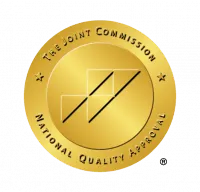How To Recognize Alcohol Poisoning
You’ve probably seen people who were “three sheets to the wind,” or even unconscious from too many drinks. Perhaps that’s even been you a few times.
That loss of control may appear blissful to some, but it could also turn into a nightmare. According to the Centers for Disease Control and Prevention, about six people in the U.S. die every day from alcohol poisoning. And alcohol poisoning-related emergency room visits are on the rise.
So, how do you prevent yourself or your loved one from crossing this line, and what are the warning signs? In this post, we’ll discuss safe drinking limits, the symptoms of alcohol poisoning, and what to do if you or a friend is in danger.
For more general information about drinking levels and blood alcohol concentration, continue here.
Alcohol Poisoning Explained
The definition of alcohol poisoning is a dangerously high, potentially fatal concentration of alcohol in the blood. This is usually the result of binge drinking, the consumption of large amounts of alcohol in a relatively short time period. Typically, a healthy liver can process around one drink per hour. Drinking at a faster pace puts you on the path towards intoxication. The faster you drink, the greater the risk.
Binge drinking is generally bad for your health, but at what point can it be life threatening? To put things in perspective, a blood alcohol concentration of 0.08 percent is enough to get you arrested for drunk driving in the United States. This typically means four to five drinks in a two hour period, depending on body weight. This same quantity is used to define binge drinking.
As blood alcohol concentration rises beyond .08, people tend to show signs of severe intoxication. These include poor physical coordination, loss of balance, nausea, and confusion. Blood alcohol levels between 0.16 and 0.3 percent increase the risk of blackouts, vomiting, and loss of consciousness. Attain an even higher blood alcohol level, and you’re at significant risk of alcohol poisoning. When blood alcohol concentration reaches 0.4 percent or higher, people may go into a coma or even die.
Learn more about blood alcohol levels and what they mean.

Symptoms of Alcohol Poisoning
How can you tell the difference between someone experiencing alcohol poisoning, and someone who is simply very drunk? Dangerous symptoms include:
- Extreme mental confusion
- Loss of consciousness or non-responsiveness to stimuli
- A drop in body temperature
- Abnormally slow breathing or unusual pauses between breaths
- Vomiting while unconscious or confused
- Pale or blue-tinged skin tone
If you see someone exhibiting these signs, take action quickly—their life could be at risk.
How to Treat Alcohol Poisoning
If you’re with someone who you believe is suffering from alcohol poisoning, you should:
- Keep the poisoned individual propped upright, if possible. This helps prevent them from choking—which is likely to happen if they vomit while lying down. If you can’t prop the person up, make sure they lie on one side, instead of on their back.
- Call 911 and describe the alcohol poisoning symptoms. Request any instructions for additional first aid, and make sure that help is on the way. Timely emergency treatment can save a person’s life.
The emergency medical team will typically take a blood sample to determine the person’s exact blood alcohol concentration. They will then focus on normalizing body function as much as possible while the alcohol metabolizes. Treatment techniques may include oxygen therapy, to compensate for slowed breathing, and delivering intravenous fluids, as alcohol can cause severe dehydration. They may also provide intravenous glucose or vitamins to help prevent a coma or another catastrophic reaction.
Preventing Alcohol Poisoning
Alcohol poisoning usually occurs by accident. Most people would never consciously decide to drink a toxic or life-threatening amount of alcohol. But it’s important to understand that when people drink excessively it’s often the alcohol calling the shots. Alcohol is infamous for affecting judgement and self-awareness, while rewarding repeated drinks with pleasurable responses in the brain. The effects of binge drinking can snowball for some people, and it can be hard to limit alcohol consumption to an amount that allows for safe, rational choices.
The best way to prevent alcohol poisoning is to gain greater control of your overall drinking patterns and behaviors. If you struggle to moderate your consumption, or know someone with a pattern of binge drinking, there’s no shame in looking for some help.
Will insurance cover treatment? Verify Coverage
Have Questions? Call (800) 504-5360



